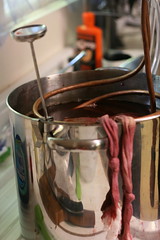Guest Post by: Shireen Qudosi

An Introduction to Wine
What You Need to Know Beyond Just Red and White
With the rise in environmental awareness, there’s now a mushrooming rise of eco-friendly wine and wineries. There are three categories of eco-friendly wines: sustainable, organic, and biodynamic.
“Sustainable” means that grapes were grown with few to no chemical, fertilizers, pesticides, or herbicides. This method nurtures the soil naturally, whereas “organic” wines are grown in organically certified vineyards and are made without added sulfites.
On the other hand, “biodynamic” winemaking goes way beyond organics. With biodynamics, the farm is viewed as a living system. The soil is treated with complex compost preparations (of course without chemicals or pesticides), including quartz, yarrow flowers, stinging nettle, and more.
Biodynamic winemakers claim to have noted stronger, clearer, more vibrant tastes in their wines, as taste test conducted byFortune confirmed. Now all you have to do switch out bulky refrigerators for portable wine coolers, an energy efficient way to chill your wine.
If one of your hobbies is collecting exotic or expensive wines, then the next thing you have to think about is how you're going to maintain your investment. There are a lot of different types of wine storage units and between wine bottle coolers, wine racks, portable wine coolers, and wine cellars, it's easy to get confused.
However, with an easy to follow guide on the importance of storing your investment properly and a quick breakdown of the different types, you'll have this category covered. But before discussing the different options, it's important to understand why simple sticking a bottle or two in the fridge is far from adequate for storing your bottle of wine.
 When it comes to choosing a method for wine storage, you want to consider and compare the different features available to you. There are three basic types of wine cooler storage devices: wine bottle coolers, (multiple bottle) wine coolers, and wine cellars.
When it comes to choosing a method for wine storage, you want to consider and compare the different features available to you. There are three basic types of wine cooler storage devices: wine bottle coolers, (multiple bottle) wine coolers, and wine cellars.
If you're a beginner, you may want to consider a wine bottle cooler, which also works great for dinners and smaller events. This way you can have the bottle temperature maintained while you dine. This is a particularly key table setting item if you expect the meal to last for a longer time. A wine cooler also adds a level of sophistication to any dinner or cocktail party, which you can never go wrong with
If you're collection is a little larger, then consider a wine coolerthat comes equipped with wine racks to prevent your bottles from clashing together. Wine coolers have advanced a long way and most (such as NewAir wine coolers) now also come with thermoelectric multiple independently controlled temperature zones for both red and white wines, touch screens, sleek lighting with glass doors, casters for mobility, as well as a wide variety of styles for various space needs, plus an ability to house anywhere between 14 to 32 bottles.
When buying a wine cooler, you should also understand the specific differences between a wine cooler and a wine cellar. If you have aging wines or a long term wine storage need then you need a more sophisticated wine cellar as opposed to just a wine cooler. Once you've understood the difference you want to consider the capacity you need for a wine cooler (or cellar). However, if you're a wine expert or have a larger collection, then a portable wine cellar is your go to purchase. Small or large, a wine cooler unit protects your investment (as well as its taste) until you're ready to drink it.
But above all, don’t be a wine hoard. Remember that wine is for enjoyment. Salu!
Source: Intro to Wine is brought to you by Air & Water, Inc.

 Follow Me On Twitter
Follow Me On Twitter



